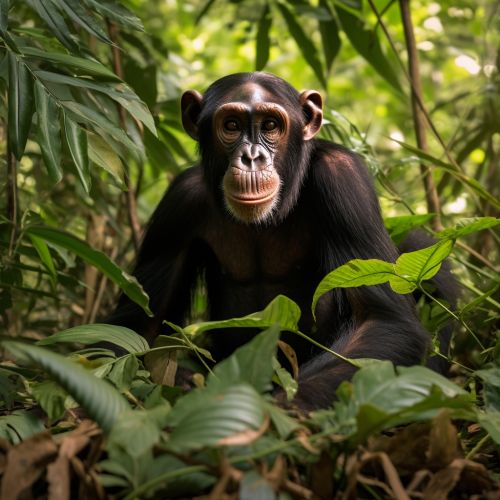Common Chimpanzee
Taxonomy and Evolution
The common chimpanzee (Pan troglodytes) belongs to the family Hominidae, also known as the great apes. This family also includes humans, gorillas, and orangutans. The genus Pan consists of two extant species: the common chimpanzee and the bonobo.
Chimpanzees and humans share a common ancestor and are closely related. In fact, chimpanzees share about 98.7% of their DNA with humans, making them our closest living relatives. The split between human and chimpanzee lineages is thought to have occurred between 5 and 7 million years ago.
Physical Characteristics
Common chimpanzees are robust and heavily built. Males are larger and more muscular than females. Adult males weigh between 40 and 70 kg, while females weigh between 32 and 50 kg. The body is covered with long black hair, but the face, ears, fingers, and toes are bare. They have a prominent brow ridge and a large braincase. The arms are longer than the legs, and the hands are capable of fine manipulation.
Chimpanzees have a unique mode of locomotion known as knuckle-walking, which involves the use of the knuckles for support during terrestrial travel. They are also excellent climbers and spend a significant amount of time in trees.
Behavior and Ecology
Chimpanzees are highly social animals and live in communities that can consist of up to 150 individuals. These communities are fission-fusion societies, where the size and composition of the group change as individuals move in and out of the group.
Chimpanzees are omnivorous, consuming a wide variety of foods that include fruits, leaves, bark, honey, insects, and meat. They are known to hunt small to medium-sized mammals, including other primates.
Chimpanzees are also known for their use of tools. They use sticks to extract termites from their mounds and rocks to crack open nuts. They also use leaves as sponges or spoons to drink water.
Conservation Status
The common chimpanzee is listed as endangered by the IUCN. The major threats to chimpanzees are habitat loss, hunting, and disease. Conservation efforts are focused on protecting habitats, enforcing laws against hunting and the pet trade, and educating the public about the importance of chimpanzees and their habitats.
See Also


